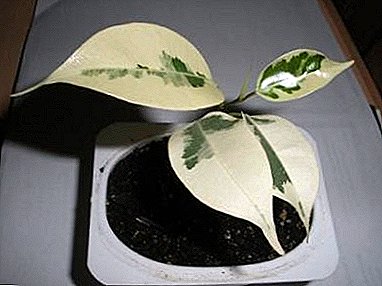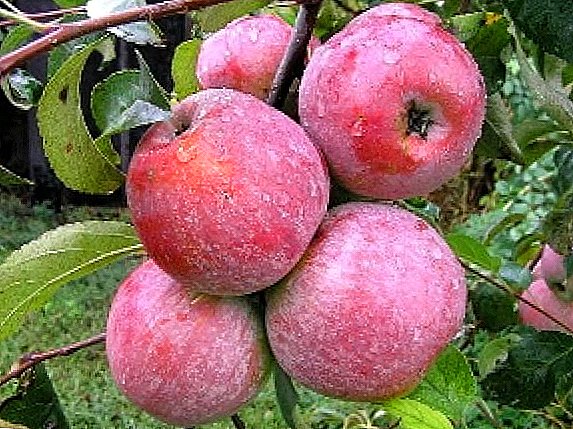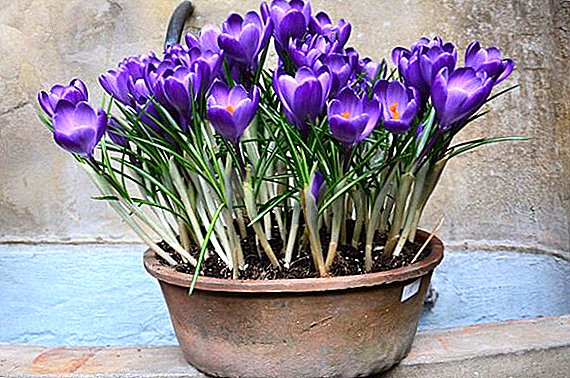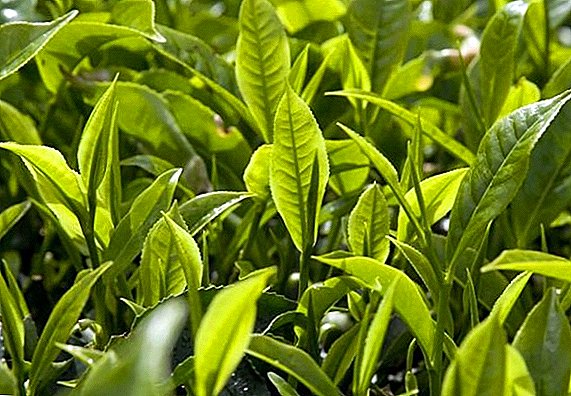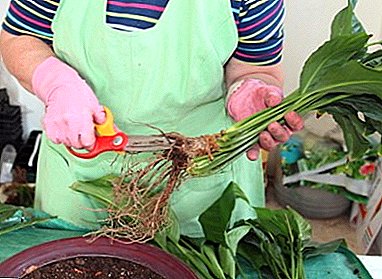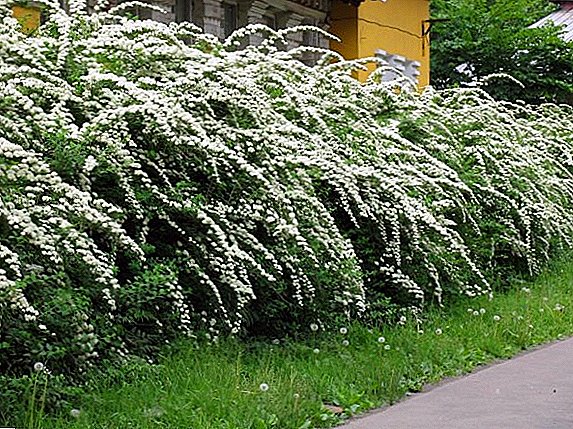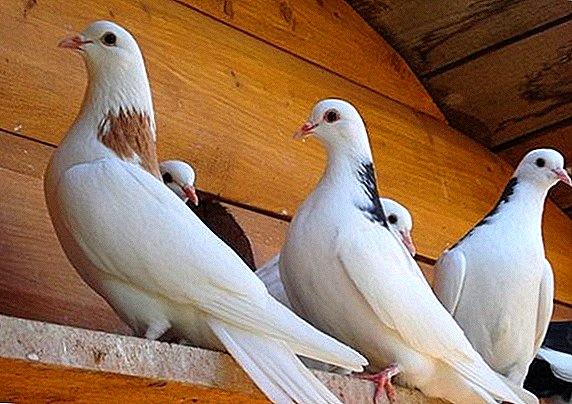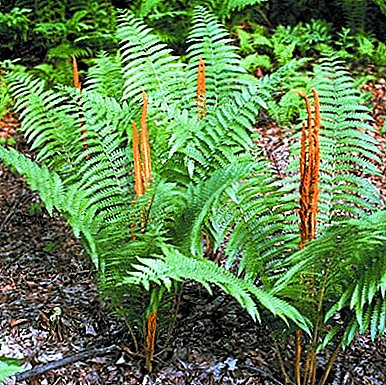
Indeed, ferns are plants with a history that goes back hundreds of millions of years, and traces of the huge forefathers of Osmunda (pure) were found in the Triassic (200-250 million years old) sediments of Antarctica.
The origin of the name of this genus of ferns is associated, on the one hand, with their medicinal properties, and on the other, with the magical properties of the plant.
In the northern early medieval tradition: Osmund (Asmund) - one of the names of the Scandinavian god Thor.
All ferns of the Osmund genus are tall, powerful plants with one way or another isolated spore-bearing parts.
They are widely used to create decorative and deciduous groups in landscape design and landscaping densely shaded areas. Rare species are protected.
Kinds
In the open ground of the middle band most often grown three types of pure: royal, Asian and Clayton.
Royal
Osmund royal or stately grows in the vast European territories, in the Caucasus, in the forests of the Americas, India, Africa, swamps and peatlands.In the south, with sufficient humidity, this species reaches a two-meter height.
The leaves (in fact, of course, it is not quite the leaves; botanists call them flatworms, vayyami) dense, leathery, characteristic of ferns, feathery structure.
In winter, they die off, and in spring they grow again reddish shoots, then, developing, they become light green and in autumn, by the end of the vegetation cycle, they acquire a pure golden color.
After dispersing the dispute, they acquire a brownish-red color and stand out clearly against the general light green background.
Photos subspecies Chistot majestic:
Asian
Osmund Asiatic or Cinnamon grows in eastern North America, as well as in the Far Eastern region, in moist forest glades.
She has brilliant light green leaves, and red shoots covered with spores of a fern, appear in June, grouping in the center of the bush.
Photos of the Chistou Asian subspecies:
Clayton's
Osmund Clayton is less common, on wet edges and in light ravines of North American, Chinese, Japanese and Himalayan forests.
Occasionally growing in the south of Primorsky Krai - there it is protected as a relict plant.
It has light green feathery leaves with a waxy coating and, like an Asian species, osmunds, also grows spores on the central shoots of the bush in summer, but the sporing parts do not cover the whole leaf, but are located only on its middle parts.
By mid-autumn, the leaves die off, "melted" in September with an orange-gold color.
Photos of the Chistou Clayton subspecies:
Home care
Lighting
Ferns are pure forest native forest prefer shady and semi-shady places. However, if you provide them with constant humidity, they reconcile with the lighted areas.
Temperature
Osmund genus mainly grows in warm and temperate climates.
Royal Osmund is less resistant to frost.
Asian (cinnamon) appearance and pure Clayton withstand forty-degree frost.
Shelter for the winter
Chista royal (stately) successfully endure the winter cold, if you cover it with fallen leaves of oak, maple or linden.
The foliage of birch and pine needles for such a shelter is not used.
Asian purest in the shelter does not need, as purely Clayton.
Adiantum, Polyrales, Thief
Humidity
High humidity - a prerequisite for development ferns, especially forest forms, which are purely pure. If there is little moisture in the soil, growth slows down and potentially one and a half to two meter giants become low dwarfs.
Drought-resistant - for a limited time - can only be a well-developed, tall fern.
Abundant watering, planting near a reservoir allows Osmund to grow in an open, lighted place.
The soil
 Chistousta, like all ferns, grow on loose, acidic soils.
Chistousta, like all ferns, grow on loose, acidic soils.
Optimal for their planting soil should contain peat, rotten foliage, pine needles and sand.
Top dressing is not required, and humus, especially manure, can lead to the death of these plants.
Transfer
Transplant and parallel rejuvenating division best done in early spring when osmund starts to grow.
Plants or their separated parts are planted in places with prepared soil with maximum preservation of earthy coma.
In the period of active growth, in the summer, transplantation is also possible. In this case, it is necessary, in addition to the preservation of the roots, to ensure a high soil moisture.
The transplanted ferns restore and grow the root system within a year or two. At this time, they are highly moisture-loving.
Pruning
Osmund leaves (fronds) pruned when dividing the bush in the summer. Pruning before winter is recommended only for osmund cinnamon.
Breeding
Reproduction of pure spores is possible, but it practically happens self-sowing, since the viability of a dispute lasts a short time - no longer than two weeks. The seedlings sown by the fern can be carefully seated, and the distance between young plants should be no less than one and a half meters.
For target reproduction purest in landscape culture apply the division of rhizome. At the same time, trying not to destroy the earthen room, they separate the side shoots with a piece of the root system and plant them in a prepared place with the appropriate soil.
Best of all, such an operation takes place in spring, when young leaves just unfold.
During the summer division, the leaves of the fern should be cut and enhanced watering of the seated parts of the plant should be ensured, especially since the delenki are difficult to take root, and the growth of the rooted specimens passes slowly over a period of one to two years.
Diseases and pests
All types of osmunds are practically not affected by any diseases or pests.
Beneficial features
 In the process of growth and development of pure - ferns with a powerful root system - they form around themselves a soil layer of a specific composition, which is used as a substrate for growing orchids.
In the process of growth and development of pure - ferns with a powerful root system - they form around themselves a soil layer of a specific composition, which is used as a substrate for growing orchids.
Wherein "Osmund peat" is especially appreciated from under the pure royal (majestic).
Hairs of the same type of osmund, mixed with cotton, were used in Japanese weaving for the manufacture of coarse fabric.
Purest cinnamon (Asian) belongs to the number of edible ferns. They eat rachis, the stem of a young sprout with a leaf that has not yet unfolded. These parts are salted or boiled immediately after collection, and then used as a useful flavoring agent in mixed dishes.
Experienced herbalists apply decoctions of leaves and rhizomes of cinnamon purely outwardly - as a wound healing and antirheumatic drug, as well as for ingestion with a whole range of problems, including in diseases of the spleen and intestines.
Overdose of fern drugs is extremely dangerous, so they are used very carefully and consciously.
Osmund (pure) grows moderately; such a plant will never become a weed.
This fern not only has a long million-year-old pedigree, it supplies orchid substrates, medicinal drugs and exotic flavoring additives, but it is also a persistent, unpretentious, spectacular decoration of the site, especially its moist and shady places where most deciduous plants cannot survive.


